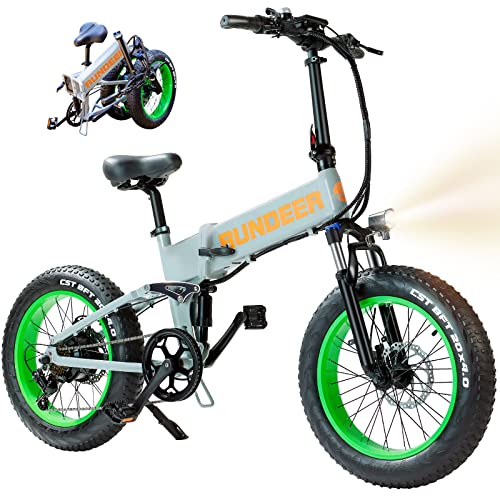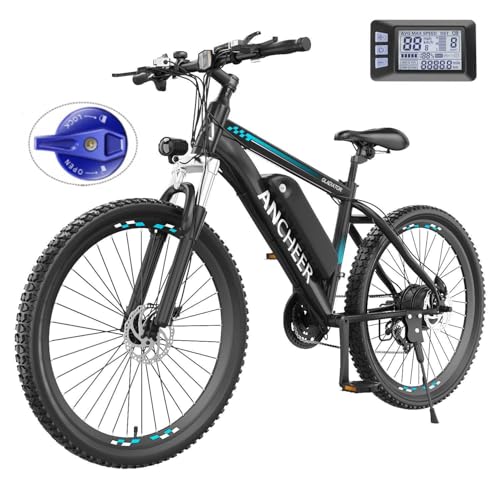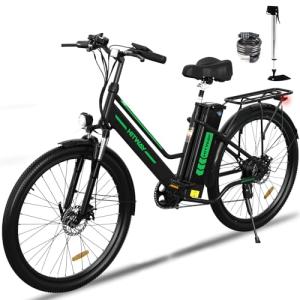Introduction
In today's fast-paced world, the quest for health, adventure, and eco-friendly transportation has led many to rediscover the joy of cycling. Whether you're a seasoned cyclist looking to upgrade your ride or a beginner embarking on your first cycling journey, choosing the right bicycle is a pivotal decision that can greatly enhance your riding experience.
Importance of Buying the Right Bicycle
Selecting a bicycle that suits your needs, preferences, and riding style is crucial for several reasons:
Comfort and Enjoyment: Riding a bicycle that fits you well and matches your intended use ensures a comfortable and enjoyable experience on the road or trail.
Performance: The right bicycle can significantly improve your performance, whether you're cruising through city streets, tackling challenging mountain trails, or embarking on long-distance rides.
Safety: A properly sized and equipped bicycle enhances safety by providing better control, stability, and responsiveness, reducing the risk of accidents and injuries.
Longevity and Value: Investing in a high-quality bicycle that meets your requirements can offer long-term value and satisfaction, outlasting cheaper alternatives and requiring fewer repairs and replacements.
Overview of What the Guide Will Cover
In this comprehensive guide, we'll delve into every aspect of purchasing a new bicycle to help you make an informed decision. From assessing your needs and understanding different bike types to sizing and fit considerations, we'll cover it all. You'll learn about essential components and features, receive tips for test riding and comparison shopping, and gain insights into maintenance, accessories, and gear. By the end of this guide, you'll be equipped with the knowledge and confidence to choose the perfect bicycle that aligns with your lifestyle, preferences, and budget.
So, let's embark on this exciting journey together and discover the ultimate guide to buying a new bicycle.
Assessing Your Needs
Before diving headfirst into the vast sea of bicycle options, it's essential to take a moment to reflect on your riding goals, preferences, and practical considerations. By clarifying your needs upfront, you can streamline the selection process and ensure that the bicycle you choose aligns perfectly with your lifestyle and aspirations.
Determine Your Riding Goals and Preferences
Purpose: Consider the primary purpose of your bicycle. Are you looking for a reliable commuter to navigate city streets, a rugged trailblazer for off-road adventures, or a versatile hybrid that can handle a bit of everything?
Frequency: Evaluate how often you plan to ride and the duration of your typical rides. Are you a daily commuter, a weekend warrior, or an occasional leisure rider?
Terrain: Take into account the type of terrain you'll be riding on most frequently. Will you primarily be cycling on smooth pavement, rough trails, or a mix of both?
Style: Reflect on your personal style preferences and aesthetic tastes. Do you lean toward sleek and minimalist designs, or do you prefer bold and colorful aesthetics?
Consider Your Riding Terrain and Conditions
Urban Environment: If you'll be navigating city streets, consider factors such as traffic congestion, road conditions, and the availability of bike lanes and infrastructure.
Off-Road Adventures: For those venturing off the beaten path, assess the ruggedness of the terrain, including steep inclines, rocky trails, and unpredictable weather conditions.
Mixed Terrain: If your rides encompass a variety of terrain types, look for a versatile bicycle that can handle both paved roads and gravel paths with ease.
Climate: Take into account the climate and weather conditions prevalent in your area. Will you be riding in scorching heat, freezing cold, or rainy weather?
Identify Your Budget
Set a Realistic Budget: Determine how much you're willing to invest in a new bicycle, taking into account not only the initial purchase price but also potential additional expenses for accessories, maintenance, and repairs.
Value vs. Cost: Strive to strike a balance between value and cost. While it's tempting to opt for the cheapest option available, investing in a quality bicycle that meets your needs can yield greater long-term satisfaction and value.
Consider Total Cost of Ownership: Factor in ongoing expenses such as maintenance, repairs, and upgrades when evaluating the total cost of ownership over the lifespan of the bicycle.
By carefully assessing your needs, preferences, and budget constraints, you lay a solid foundation for selecting the perfect bicycle that seamlessly integrates into your lifestyle and brings you years of joy and fulfillment on the open road.
Understanding Bicycle Types
When it comes to purchasing a new bicycle, navigating the myriad of options can feel overwhelming. Understanding the different types of bicycles available is crucial for finding the perfect match for your riding style, terrain, and preferences. Let's explore the diverse landscape of bicycle types and their unique characteristics:
Road Bikes
Purpose: Road bikes are designed for speed and efficiency on paved roads, making them ideal for long-distance rides, group cycling, and competitive racing.
Key Features: Characterized by lightweight frames, narrow tires, and drop handlebars, road bikes offer aerodynamic efficiency and responsive handling. They typically feature a wide range of gears for tackling varying terrain.
Variants: Within the realm of road bikes, you'll encounter subcategories such as endurance bikes for added comfort on long rides, race bikes optimized for speed, and gravel bikes capable of tackling mixed terrain.
Mountain Bikes
Purpose: Mountain bikes are built to conquer rugged trails, rocky terrain, and steep inclines, offering versatility and durability for off-road adventures.
Key Features: Mountain bikes feature sturdy frames, wide knobby tires, and suspension systems to absorb shocks and provide traction on uneven surfaces. They come in various styles, including hardtail (front suspension only) and full-suspension (front and rear suspension).
Subtypes: Mountain bikes are further categorized based on their intended use, such as cross-country bikes for fast-paced riding, trail bikes for all-around performance, and downhill bikes for descending steep slopes at high speeds.
Hybrid Bikes
Purpose: Hybrid bikes blend the best of both road and mountain bikes, offering a versatile and comfortable ride for commuting, leisurely rides, and light off-road excursions.
Key Features: Hybrid bikes typically feature a relaxed geometry for an upright riding position, medium-width tires for stability on various surfaces, and a combination of road and mountain bike components. They're well-suited for urban commuting, fitness riding, and recreational cycling.
City/Urban Bikes
Purpose: City or urban bikes are designed for practicality, comfort, and style, making them ideal for navigating city streets, running errands, and commuting to work or school.
Key Features: City bikes often feature step-through frames for easy mounting and dismounting, fenders to protect against splashes, racks or baskets for carrying cargo, and built-in lights for enhanced visibility.
Electric Bikes
Purpose: Electric bikes, also known as e-bikes, incorporate electric motors to provide assistance while pedaling, offering an alternative mode of transportation for commuting, leisure riding, and tackling hilly terrain.
Key Features: E-bikes come in various configurations, including pedal-assist models that amplify your pedaling power and throttle-controlled models that allow you to ride without pedaling. They offer adjustable levels of assistance and are available in a wide range of styles, including road, mountain, hybrid, and city bikes.
By understanding the distinct characteristics and intended uses of different bicycle types, you can narrow down your options and choose the perfect ride that suits your lifestyle, preferences, and riding aspirations.
Bike Sizing and Fit
Ensuring proper bike sizing and fit is paramount for comfort, performance, and safety. Riding a bicycle that matches your body proportions and riding style enhances comfort, minimizes the risk of injuries, and maximizes efficiency. Let's delve into the essential aspects of bike sizing and fit:
Importance of Proper Bike Sizing
Comfort: Riding a bicycle that's the right size for your body ensures proper alignment and distribution of weight, reducing strain on your joints and muscles.
Efficiency: A properly sized bicycle allows for optimal power transfer and pedaling efficiency, enabling you to ride longer distances with less effort.
Control and Stability: The right bike size enhances control and stability, especially when maneuvering through tight spaces or navigating challenging terrain.
Understanding Frame Geometry
Frame Size: The frame size, typically measured in centimeters or inches, refers to the length of the seat tube from the center of the bottom bracket to the top of the seat tube.
Geometry: Bicycle frames come in various geometries, including traditional, compact, and sloping designs, each offering unique riding characteristics and fit options.
Factors to Consider for Proper Fit
Height: Your height is a primary factor in determining the appropriate frame size. Refer to manufacturer sizing charts or consult with a bike fit specialist to find the right size for your height.
Reach: The reach, or horizontal distance from the saddle to the handlebars, affects your riding posture and comfort. Adjust stem length and handlebar position to achieve the desired reach.
Inseam Length: Your inseam length, measured from the floor to your crotch, helps determine the correct saddle height and standover clearance. Ensure adequate clearance between the top tube and your inseam to avoid discomfort or injury.
Handlebar Height: Adjusting the handlebar height can influence your riding position and comfort. Experiment with different stem angles and spacer configurations to find the optimal handlebar height for your preferences.
Saddle Position: Proper saddle position, including height, tilt, and fore-aft adjustment, is crucial for comfort and efficiency. Fine-tune saddle position to achieve a balanced weight distribution and minimize pressure on sensitive areas.
Pedal Cleats: If using clipless pedals, ensure proper cleat positioning to optimize power transfer and reduce the risk of knee pain or injury.
Professional Bike Fitting
Benefits: Consider investing in a professional bike fitting session conducted by a certified bike fit specialist. A comprehensive bike fitting assesses your biomechanics, riding style, and flexibility to optimize bike position and fit.
Adjustments: A professional bike fitting may involve adjustments to saddle height, handlebar position, cleat alignment, and other components to achieve the perfect fit for your body and riding preferences.
By prioritizing proper bike sizing and fit, you lay the foundation for a comfortable, efficient, and enjoyable riding experience. Whether you're embarking on leisurely rides or tackling epic cycling adventures, a well-fitted bicycle is your key to unlocking the full potential of two-wheeled exploration.
Components and Features
Understanding the various components and features of a bicycle is essential for making an informed purchasing decision. From the frame material to the drivetrain and brakes, each component plays a crucial role in determining the performance, comfort, and durability of your ride. Let's explore the key components and features to consider when buying a new bicycle:
Frame Materials
Steel: Steel frames offer durability, comfort, and a smooth ride quality. They're known for their resilience and ability to absorb vibrations, making them ideal for touring bikes and commuters seeking a comfortable ride.
Aluminum: Aluminum frames are lightweight and stiff, providing efficient power transfer and responsive handling. They're popular among road cyclists and performance-oriented riders who prioritize speed and agility.
Carbon Fiber: Carbon fiber frames combine lightness, stiffness, and vibration damping properties, offering unparalleled performance and comfort. They're favored by competitive cyclists, enthusiasts, and riders seeking the ultimate in performance and technology.
Titanium: Titanium frames strike a balance between strength, durability, and compliance, delivering a smooth and lively ride quality. They're prized for their corrosion resistance and longevity, making them an excellent choice for discerning riders seeking a high-end, long-lasting bicycle.
Drivetrain
Gears: The number of gears and gear ratios determine the bike's versatility and ability to tackle varying terrain. Consider the range of gears available and the gear ratios to ensure adequate gearing for your riding needs.
Crankset: The crankset comprises the crank arms, chainrings, and bottom bracket, converting pedaling motion into forward propulsion. Choose a crankset that matches your riding style and terrain, whether you prefer a compact, standard, or triple crankset configuration.
Shifters: Shifters control gear changes, allowing you to adjust your pedaling effort to match changing terrain. Choose between traditional mechanical shifters or modern electronic shifters for precise and effortless gear changes.
Brakes
Rim Brakes: Rim brakes, including caliper brakes and cantilever brakes, apply pressure to the rim of the wheel to slow down or stop the bike. They're lightweight, easy to maintain, and offer excellent modulation and control.
Disc Brakes: Disc brakes, including mechanical and hydraulic variants, use disc rotors mounted on the wheel hubs to provide superior braking performance and modulation. They offer better stopping power, especially in wet or muddy conditions, and are increasingly popular across various bike types.
Wheels and Tires
Wheel Size: Consider the wheel size, including 700c for road bikes, 27.5" and 29" for mountain bikes, and various sizes for hybrid and city bikes, based on your riding preferences and terrain.
Tire Width and Tread: Choose tire width and tread pattern based on your riding conditions, whether you prioritize speed on smooth roads, traction on loose gravel, or durability on rough trails.
Suspension
Front Suspension: Many mountain bikes feature front suspension forks to absorb impacts and improve traction on rough terrain. Consider the travel, damping, and adjustability of the suspension fork based on your riding style and preferences.
Full Suspension: Some mountain bikes feature full-suspension designs with both front and rear suspension systems for maximum comfort and control on technical trails and descents.
Additional Features
Lights: Integrated lights provide visibility and safety when riding in low-light conditions or at night. Look for bikes with built-in front and rear lights or consider adding aftermarket lighting systems.
Fenders: Fenders or mudguards protect you from spray and debris kicked up by the wheels, keeping you clean and dry during wet or muddy rides.
Racks and Panniers: Integrated racks or mounting points allow you to attach racks and panniers for carrying cargo, groceries, or touring gear, adding versatility to your bicycle.
By understanding the various components and features of a bicycle, you can tailor your selection to match your riding preferences, terrain, and budget, ensuring a perfect fit for your cycling adventures.
Test Riding and Comparison
Test riding and comparing bicycles in person is an essential step in the purchasing process. While online research can provide valuable insights, nothing beats the experience of getting hands-on with different bikes to find the perfect match for your needs and preferences. Let's explore the importance of test riding and how to make the most of your comparison shopping experience:
Importance of Test Riding
Fit and Comfort: Test riding allows you to assess the fit and comfort of each bicycle, ensuring that it feels comfortable and natural to ride. Pay attention to factors such as saddle comfort, handlebar reach, and overall riding position.
Handling and Stability: Test riding provides an opportunity to evaluate the handling and stability of each bike, especially when cornering, braking, and navigating tight spaces. Consider how the bike responds to your inputs and whether it feels stable and predictable.
Ride Quality: Test riding allows you to experience the ride quality of each bike firsthand, including factors such as frame stiffness, suspension performance, and tire comfort. Pay attention to how the bike absorbs bumps and vibrations and whether it provides a smooth and enjoyable ride.
Braking and Shifting: Test the braking and shifting performance of each bike to ensure smooth and reliable operation. Pay attention to the responsiveness of the brakes, the precision of the shifting, and any potential issues or concerns.
Tips for Test Riding
Choose a Variety of Bikes: Test ride a variety of bicycles that match your intended use and preferences, including different types, brands, and models. This allows you to compare features, performance, and ride quality across multiple options.
Test Different Terrains: If possible, test ride bicycles on a variety of terrains that match your typical riding conditions, including paved roads, gravel paths, and off-road trails. This provides a more comprehensive assessment of each bike's capabilities and suitability for your needs.
Ask Questions: Don't hesitate to ask questions and seek guidance from knowledgeable staff or bike experts during the test riding process. They can provide valuable insights, recommendations, and assistance in finding the right bike for you.
Take Your Time: Take your time during the test riding process and don't rush your decision. Spend ample time riding each bike, experimenting with different settings and adjustments, and considering how each bike feels and performs.
Comparison Shopping
Make Notes: Take notes during or after each test ride to document your impressions, including likes, dislikes, and any concerns or questions. This helps you remember important details and make informed comparisons later on.
Consider Value: When comparing bicycles, consider not only the initial purchase price but also the overall value, including factors such as component quality, warranty coverage, and included accessories or services.
Evaluate Long-Term Benefits: Think about the long-term benefits and implications of each bike, including factors such as durability, maintenance requirements, and potential for upgrades or customization.
Trust Your Instincts: Ultimately, trust your instincts and choose the bike that feels right for you. Pay attention to how each bike makes you feel, both during the test ride and when considering your options afterward.
By taking the time to test ride and compare bicycles in person, you can make a confident and well-informed decision that aligns with your riding goals, preferences, and budget. So, don't hesitate to hit the road and embark on your journey to find the perfect bike!
Shopping Tips and Considerations
Navigating the process of purchasing a new bicycle can be daunting, especially with the multitude of options available both online and in-store. To streamline your shopping experience and ensure that you make a well-informed decision, consider the following tips and factors:
Researching Brands and Models
Online Reviews: Utilize online resources such as customer reviews, cycling forums, and expert opinions to gather insights into different brands and models. Pay attention to common themes, pros, and cons mentioned by other cyclists.
Brand Reputation: Research the reputation and track record of bicycle brands, including their history, manufacturing processes, and commitment to quality and customer satisfaction. Look for brands known for innovation, durability, and reliability.
Testimonials: Seek out testimonials and recommendations from friends, family members, or fellow cyclists who have firsthand experience with specific brands or models. Personal recommendations can provide valuable insights and help guide your decision.
Considering Online vs. Local Bike Shops
Online Retailers: Online retailers offer convenience, a wide selection of products, and competitive pricing. However, consider factors such as shipping costs, assembly requirements, and the inability to test ride bikes before purchasing.
Local Bike Shops: Local bike shops provide personalized service, expert advice, and the opportunity to test ride bicycles before making a purchase. They also offer ongoing support, maintenance services, and a sense of community. Consider supporting local businesses and building relationships with knowledgeable staff.
Hybrid Approach: Consider a hybrid approach that combines the advantages of both online and local bike shops. Research bikes online to compare features and pricing, then visit local shops to test ride and receive personalized assistance. This approach allows you to make an informed decision while supporting local businesses.
Taking Advantage of Sales and Discounts
Seasonal Sales: Keep an eye out for seasonal sales, promotions, and clearance events offered by bike retailers. These sales often coincide with the end of cycling seasons or the introduction of new models, offering significant discounts on previous year's models or overstocked inventory.
Holiday Sales: Take advantage of holiday sales events such as Black Friday, Cyber Monday, or special cycling-related holidays. These sales often feature exclusive discounts, bundle deals, or promotional offers on bikes and accessories.
Membership Discounts: Check if you're eligible for membership discounts or rewards programs offered by bike retailers or cycling organizations. Membership perks may include exclusive discounts, priority access to sales, and other benefits that can help you save money on your purchase.
Negotiating Price (if applicable)
Flexible Pricing: In some cases, bike shops may be willing to negotiate on price, especially for higher-priced models or last year's inventory. Be respectful and polite when negotiating, and be prepared to walk away if the price isn't right.
Bundle Deals: Consider negotiating for bundle deals or package discounts that include accessories, gear, or maintenance services along with your bike purchase. This approach can provide added value and savings while satisfying both parties.
Timing: Timing can be crucial when negotiating price. Consider waiting until the end of the month, quarter, or year when retailers may be more motivated to meet sales targets and offer discounts to move inventory.
By researching brands and models, considering your options between online and local bike shops, taking advantage of sales and discounts, and negotiating when appropriate, you can make the most of your bicycle shopping experience and secure the best possible deal on your new ride.
Maintenance and Aftercare
Investing in a new bicycle is just the beginning of your cycling journey. Proper maintenance and aftercare are essential for preserving the performance, longevity, and safety of your bike. By following a regular maintenance routine and adopting good cycling practices, you can ensure that your bicycle remains in top condition for years to come. Let's explore the key aspects of maintenance and aftercare:
Basic Maintenance Tasks
Cleaning: Regularly clean your bike to remove dirt, grime, and debris that can accumulate during rides. Use a mild detergent, soft brush, and water to clean the frame, drivetrain, wheels, and other components. Rinse thoroughly and dry with a clean cloth to prevent corrosion.
Lubrication: Apply lubricant to the chain, derailleurs, and other moving parts to reduce friction and prevent wear. Use a bicycle-specific lubricant and follow manufacturer recommendations for application frequency and technique.
Tire Care: Check tire pressure regularly and inflate to the recommended psi (pounds per square inch) indicated on the sidewall of the tire. Inspect tires for signs of wear, cuts, or punctures, and replace them as needed. Rotate tires periodically to ensure even wear.
Brake Inspection: Inspect brake pads for wear and replace them if they're worn down to the wear indicator line. Check brake cables and housing for signs of fraying, corrosion, or damage, and replace them if necessary. Adjust brake calipers for proper alignment and clearance.
Gear Adjustment: Periodically check gear shifting performance and adjust cable tension as needed. Ensure that gears shift smoothly and accurately through the entire range. Clean and lubricate shift cables and housing to maintain optimal performance.
Proper Cleaning and Lubrication
Cleaning: Use a gentle detergent or bike-specific cleaner to remove dirt, mud, and grease from your bike. Avoid using harsh chemicals or high-pressure sprays that can damage paint, decals, or components. Rinse thoroughly with water and dry with a clean cloth to prevent corrosion.
Lubrication: Apply lubricant to the chain, derailleur pulleys, and pivot points of brakes and shifters. Use a lubricant specifically formulated for bicycles and apply sparingly to avoid excess buildup. Wipe off any excess lubricant to prevent attracting dirt and debris.
When to Seek Professional Help
Annual Tune-Up: Schedule an annual tune-up with a professional bike mechanic to address any issues, perform preventive maintenance, and ensure that your bike is in optimal condition. A tune-up typically includes cleaning, lubrication, adjustments, and inspection of all components.
Complex Repairs: For complex repairs or issues beyond your expertise, seek assistance from a qualified bike mechanic or professional bike shop. Attempting to perform repairs without proper knowledge or tools can lead to further damage or injury.
Component Replacement: When components such as chains, cassettes, or bottom brackets show signs of wear or damage, consider replacing them to prevent further issues and maintain optimal performance. Consult with a bike mechanic to determine the appropriate replacement parts and installation procedures.
Storing Your Bicycle
Indoor Storage: Store your bicycle indoors in a dry, climate-controlled environment to protect it from moisture, humidity, and extreme temperatures. Consider using a bike rack, wall mount, or ceiling hoist to maximize space and keep your bike organized.
Covering: Use a bike cover or storage bag to protect your bike from dust, dirt, and scratches when not in use. Covering your bike also helps prevent exposure to UV rays, which can cause fading and deterioration of paint and components.
Security: Invest in a quality bike lock and secure your bicycle to a sturdy rack or fixed object when storing it outdoors or in public places. Use additional security measures such as motion-activated lights, surveillance cameras, or GPS tracking devices to deter theft and recover stolen bikes.
By following a regular maintenance routine, practicing proper cleaning and lubrication techniques, knowing when to seek professional help, and adopting smart storage and security practices, you can ensure that your bicycle remains in peak condition and ready for your next adventure.
Accessories and Gear
While the bicycle itself is the centerpiece of your cycling experience, the right accessories and gear can enhance your comfort, safety, and enjoyment on the road or trail. Whether you're commuting to work, embarking on a weekend adventure, or simply exploring your local neighborhood, equipping yourself with the right accessories can make all the difference. Let's explore a variety of accessories and gear options to consider:
Essential Gear
Helmet: A properly fitted helmet is essential for protecting your head in case of a fall or collision. Choose a helmet that meets safety standards, fits comfortably, and provides adequate ventilation for airflow.
Lock: Invest in a quality bike lock to secure your bicycle when parked outdoors or in public places. Choose a lock that's sturdy, reliable, and compatible with your preferred locking method (e.g., cable, chain, U-lock).
Lights: Front and rear lights are crucial for visibility and safety, especially when riding in low-light conditions or at night. Opt for lights with multiple brightness settings, long battery life, and easy mounting options.
Optional Accessories
Pump: Carry a portable bike pump or CO2 inflator with you on rides to quickly inflate tires in case of a flat. Choose a pump that's lightweight, compact, and compatible with your tire valve type (e.g., Presta, Schrader).
Repair Kit: Pack a basic repair kit containing essentials such as tire levers, patch kit, spare tube, multitool, and chain tool. These tools allow you to perform minor repairs and adjustments on the go, keeping you rolling smoothly.
Water Bottle Cage: Stay hydrated during rides by installing a water bottle cage on your bike frame. Choose a cage that securely holds your water bottle in place and is easy to access while riding.
Apparel
Cycling Clothing: Invest in cycling-specific apparel designed for comfort, performance, and weather protection. Consider options such as padded shorts, moisture-wicking jerseys, windproof jackets, and breathable socks to enhance your riding experience.
Shoes: Choose cycling shoes that provide a secure fit, efficient power transfer, and compatibility with your pedal system (e.g., clipless or flat pedals). Look for features such as stiff soles, breathable uppers, and convenient closure systems.
Gloves: Cycling gloves offer padding, grip, and protection for your hands during rides. Choose gloves with gel or foam padding, breathable materials, and touchscreen-compatible fingertips for added convenience.
Additional Accessories
Fenders: Install fenders or mudguards on your bike to protect yourself and your bike from mud, water, and debris kicked up by the wheels. Choose fenders that are compatible with your bike's frame and tire size for optimal coverage.
Racks and Panniers: If you'll be carrying cargo or commuting regularly, consider installing racks and panniers on your bike for convenient storage and transportation of gear, groceries, or commuting essentials.
Bike Computer: A bike computer or GPS device can track your ride metrics, navigation, and performance data, providing valuable insights and motivation for your cycling adventures.
By equipping yourself with essential accessories and gear tailored to your riding style, preferences, and needs, you can enhance your cycling experience and make the most of every ride, whether it's a short commute, a leisurely weekend outing, or an epic cycling adventure.
Environmental and Ethical Considerations
As cycling enthusiasts, it's important to recognize the impact of our actions on the environment and the communities in which we ride. By adopting sustainable practices, supporting ethical brands, and advocating for positive change, we can contribute to a healthier planet and a more inclusive cycling culture. Let's explore some environmental and ethical considerations for cyclists:
Sustainable Cycling Practices
Reduce Carbon Footprint: Choose cycling as a sustainable mode of transportation to reduce carbon emissions and minimize your environmental impact. Opt for biking instead of driving for short trips, commuting to work, or running errands whenever possible.
Reduce Waste: Minimize waste by opting for durable, long-lasting bike components, accessories, and gear. Repair and maintain your bike regularly to extend its lifespan and reduce the need for replacements. Recycle or repurpose old bike parts and accessories whenever possible.
Respect Nature: Practice Leave No Trace principles when riding in natural areas, such as national parks, forests, and wilderness areas. Stay on designated trails, avoid disturbing wildlife, and pack out all trash and litter. Respect trail closures and seasonal restrictions to protect fragile ecosystems.
Ethical Consumerism
Support Local Businesses: Patronize local bike shops, manufacturers, and brands that prioritize sustainability, fair labor practices, and community engagement. By supporting local businesses, you contribute to the local economy and foster a stronger cycling community.
Research Brands: Research the ethical and environmental practices of bike brands and manufacturers before making a purchase. Look for brands that prioritize ethical sourcing, fair labor conditions, and environmentally responsible manufacturing processes.
Certifications and Standards: Look for certifications and labels that indicate a brand's commitment to sustainability and ethical practices, such as Fair Trade, B Corp, or certifications for environmentally friendly materials and production methods.
Advocacy and Community Engagement
Advocate for Cycling Infrastructure: Advocate for safer and more accessible cycling infrastructure in your community, including bike lanes, protected paths, and bike-friendly policies. Participate in community meetings, write to local officials, and support organizations that promote cycling advocacy.
Promote Diversity and Inclusion: Support initiatives and organizations that promote diversity, equity, and inclusion in the cycling community. Encourage participation from underrepresented groups, support inclusive events and programs, and advocate for accessible cycling opportunities for all.
Educate and Inspire: Share your passion for cycling and sustainability with others by educating and inspiring your friends, family, and community members. Organize group rides, workshops, or educational events to promote cycling awareness and environmental stewardship.
By embracing sustainable cycling practices, supporting ethical brands, and actively engaging in advocacy and community initiatives, cyclists can play a vital role in creating a more sustainable, inclusive, and environmentally conscious cycling culture for future generations to enjoy.
Conclusion Buying a Bicycle
As you embark on your journey to purchase a new bicycle, it's important to recognize that cycling is more than just a mode of transportation or a recreational activity—it's a lifestyle. Whether you're a seasoned cyclist or a newcomer to the world of biking, embracing the cycling lifestyle offers a myriad of benefits for your physical health, mental well-being, and overall quality of life. Let's reflect on the transformative power of cycling and the opportunities it presents:
Health and Wellness Benefits
Physical Fitness: Cycling is an excellent form of cardiovascular exercise that strengthens your heart, lungs, and muscles while improving endurance, flexibility, and balance. Regular cycling can help you achieve and maintain a healthy weight, reduce the risk of chronic diseases, and boost overall fitness levels.
Mental Health: Cycling has been shown to have numerous mental health benefits, including stress reduction, mood improvement, and anxiety relief. The rhythmic motion of pedaling, coupled with exposure to nature and fresh air, can have a calming effect on the mind and promote mental clarity and well-being.
Sense of Achievement: Setting and achieving cycling goals, whether it's completing a long-distance ride, conquering a challenging climb, or mastering a new skill, instills a sense of accomplishment and self-confidence. Cycling challenges you to push your limits, overcome obstacles, and celebrate your progress along the way.
Connection and Community
Social Interaction: Cycling provides opportunities for social interaction and connection with like-minded individuals who share your passion for biking. Joining group rides, participating in cycling events, or simply exploring new routes with friends fosters camaraderie, friendship, and a sense of belonging.
Community Engagement: Engage with your local cycling community through volunteering, advocacy, and participation in group activities. By supporting local bike shops, attending cycling events, and advocating for cycling-friendly initiatives, you contribute to the vibrancy and vitality of the cycling community.
Environmental Stewardship: Embracing the cycling lifestyle aligns with principles of environmental sustainability and conservation. By choosing cycling as a mode of transportation, advocating for cycling infrastructure, and promoting sustainable practices, you contribute to the preservation of natural resources and the protection of the planet for future generations.
Personal Growth and Exploration
Adventure and Exploration: Cycling opens up a world of adventure and exploration, allowing you to discover new places, experience diverse landscapes, and connect with the natural world. Whether it's embarking on a multi-day bike tour, exploring scenic trails, or simply taking a leisurely ride through your neighborhood, cycling offers endless opportunities for exploration and discovery.
Personal Development: Cycling challenges you to continually learn, grow, and improve as a cyclist and as an individual. Through perseverance, discipline, and dedication, you develop valuable skills such as problem-solving, goal-setting, and resilience, which translate into other areas of your life.
Life Balance: Cycling promotes a balanced lifestyle by encouraging you to prioritize physical activity, outdoor recreation, and personal well-being amidst the demands of daily life. Incorporating cycling into your routine allows you to recharge, rejuvenate, and find joy and fulfillment in the simple act of riding a bike.
As you embark on your cycling journey, remember that the true essence of cycling lies not only in the pedals you push or the miles you cover, but in the experiences you share, the connections you forge, and the moments of joy, freedom, and self-discovery along the way. Embrace the cycling lifestyle with open arms, and let the journey unfold before you, one pedal stroke at a time.







